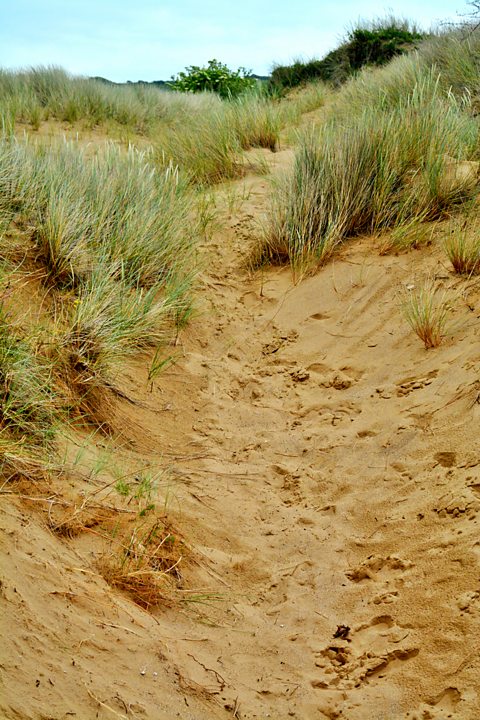Small scale ecosystems вҖ“ sand dunes
The coasts of both north and south Wales are well known for their wonderful sandy beaches, making them popular holiday destinations for visitors from the UK and many other parts of the world. Behind many of these beaches are sand dune systems which provide homes for diverse forms of wildlife including plants and insects, some so highly specialised that without these dune habitats, they might be driven to the point of extinction. In addition, these sand dunes act as a vital natural barrier to the power of the waves.
The establishment of plants
As sand dunes establish, plants start to form and grow in size along the sand dune. Primary vegetation gives stability to the sand dune which, in turn, traps sand. Wind is then deflected over the ridge and vegetation, creating shelter for larger plants to grow and establish.

The sand dunes at Merthyr Mawr are very unusual because they have formed against a carboniferous limestone plateau that runs from east to west along the coast, making the dunes at Merthyr Mawr the second highest in Europe. This reserve also contains examples of the successional stages of dune formation, from bare sand, embryonic dunes to (further inland) stabilised dunes and slacks.
The site is managed by Natural Resources Wales (NRW), and it is designated as a site of special scientific interest (SSSI) because of its wealth of plants and insect life.
Many of our sand dune systems are covered by both UK and international legislation in order to protect the habitats and the species that depend upon them. Despite these legislations, there is an increasing recognition that further protection is required, otherwise many of the species will soon become extinct.
Impacts of humans on sand dunes and coastal environments in Wales
Along the coast of south Wales, large scale developments such as the growth of towns and cities, expansion of transport networks and purpose built tourist facilities have put great pressure on sand dunes. However, more recently, our demand for a greener non-renewable energy source has added a further potential problem.
Further human impacts on cycles, flows and natural processes
Whenever humans interfere with natural ecosystems, the natural nutrient and water cycles are also altered. In addition, the natural flows of sediment along a beach or down a river may also be interrupted and changed.